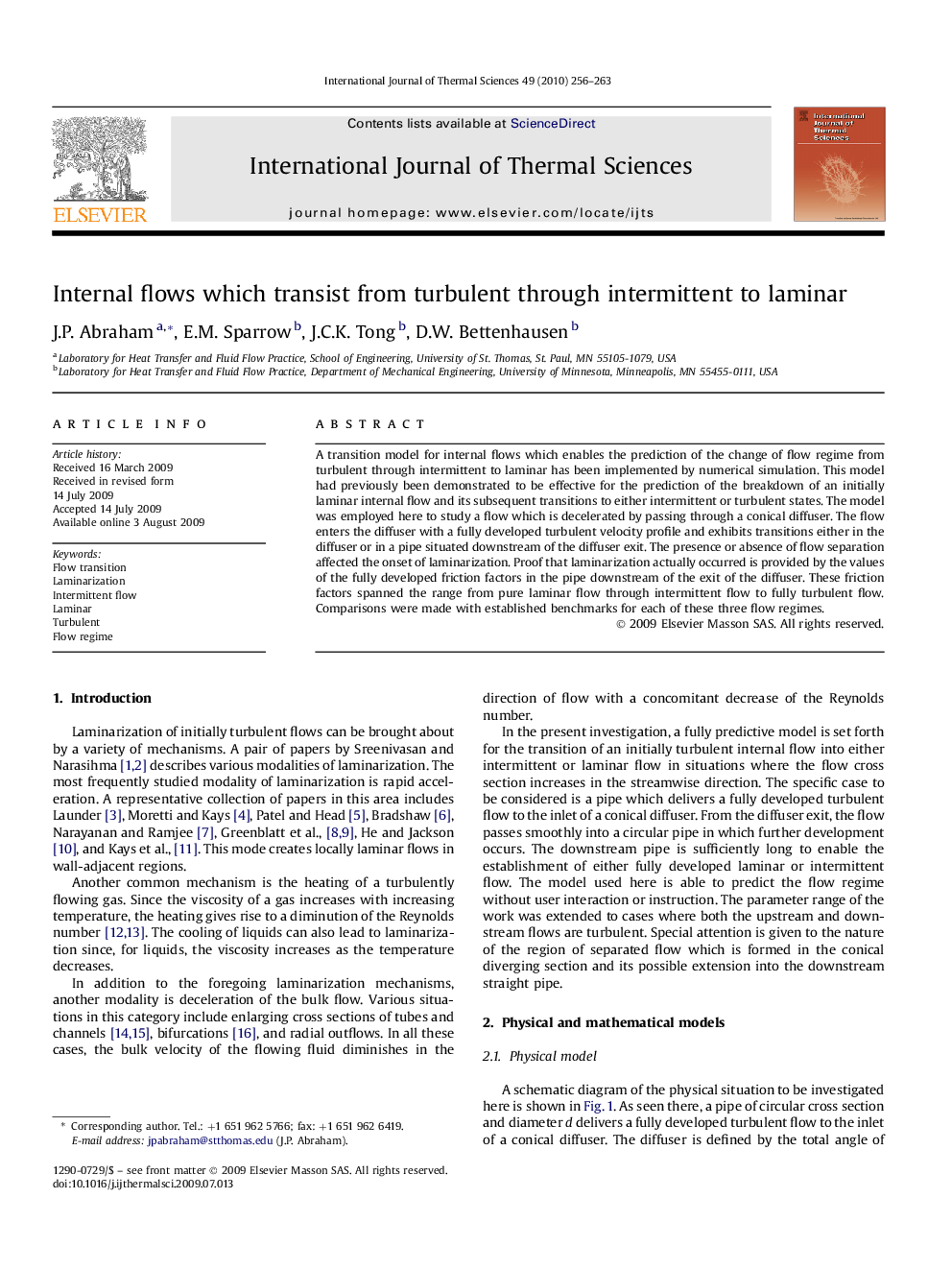| Article ID | Journal | Published Year | Pages | File Type |
|---|---|---|---|---|
| 669198 | International Journal of Thermal Sciences | 2010 | 8 Pages |
A transition model for internal flows which enables the prediction of the change of flow regime from turbulent through intermittent to laminar has been implemented by numerical simulation. This model had previously been demonstrated to be effective for the prediction of the breakdown of an initially laminar internal flow and its subsequent transitions to either intermittent or turbulent states. The model was employed here to study a flow which is decelerated by passing through a conical diffuser. The flow enters the diffuser with a fully developed turbulent velocity profile and exhibits transitions either in the diffuser or in a pipe situated downstream of the diffuser exit. The presence or absence of flow separation affected the onset of laminarization. Proof that laminarization actually occurred is provided by the values of the fully developed friction factors in the pipe downstream of the exit of the diffuser. These friction factors spanned the range from pure laminar flow through intermittent flow to fully turbulent flow. Comparisons were made with established benchmarks for each of these three flow regimes.
